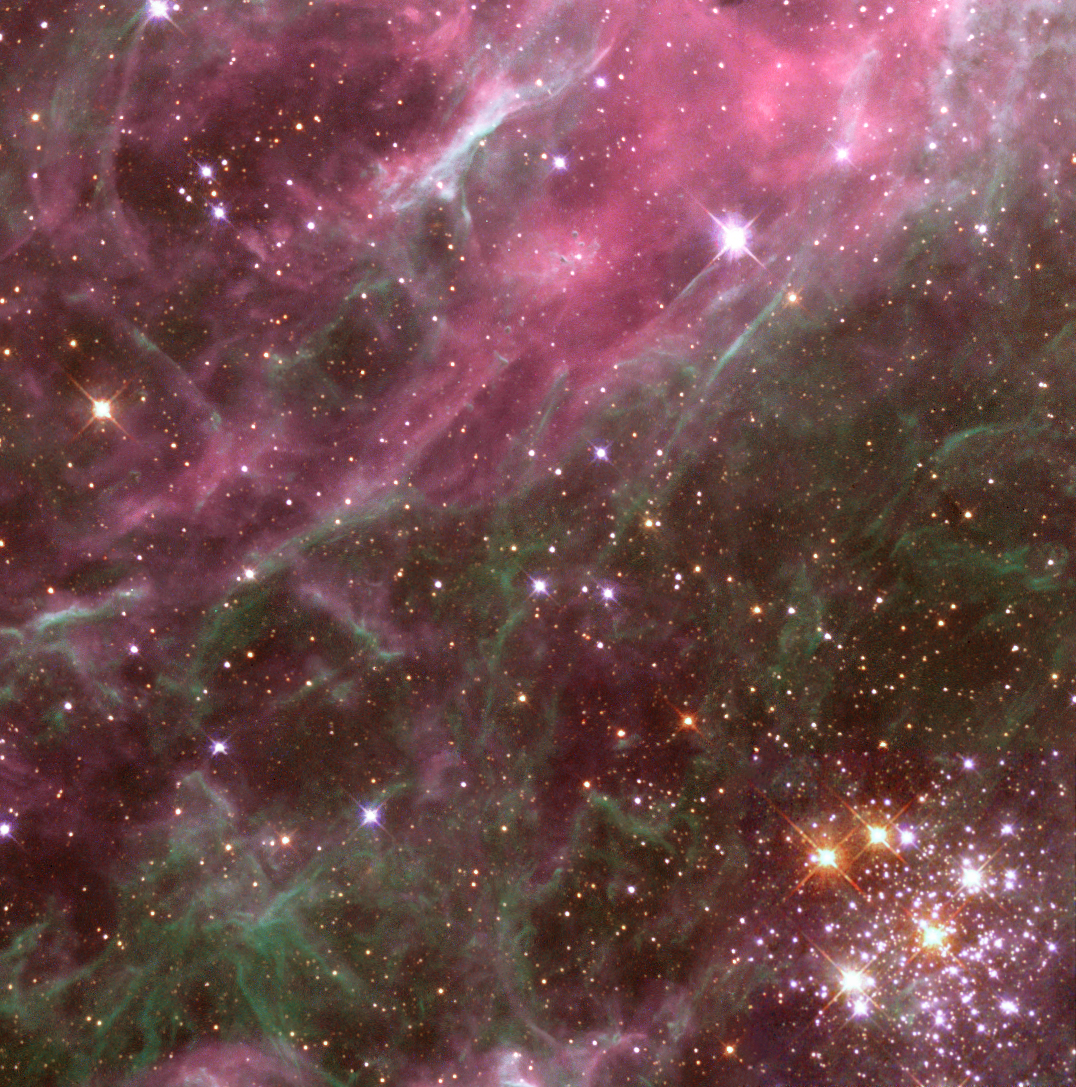
Stars: A Very Short Introduction
By Andrew King
What are you made of? You may never have thought about it before, but every atom in your body was once part of a star, even several stars in succession. And almost all the elements that make up your body — carbon, nitrogen, oxygen, and so on — would not exist at all without the stars.
How can I make such statements? Because astronomers know fairly well how stars work, and have overwhelming evidence to support these assertions and many others. Our understanding of how stars work has been growing for more than a century, in parallel with developments in physics, and is now very sophisticated.
We now know how stars live and how they die, and where to find their dead bodies. We understand how they make all the chemical elements beyond hydrogen, and how these elements are distributed through space, ultimately to make planets, and eventually in a few cases, life. We are learning how new stars are born from the ashes of older ones.
We know all this because stars are surprisingly simple physical systems, whose behaviour is governed by well-understood physical laws. Roughly speaking, we can model a star simply as a (very massive) ball of gas – almost entirely made of hydrogen, the simplest chemical element of all.
We can use physics to work out how a ball of gas like this would behave and evolve, and then compare these predictions with observations astronomers make of the stars around us.

We live very close to a star — the Sun — and our everyday experience immediately gives us some simple insights. First, we all know that the surface of the Sun is very hot, and gives us light and heat. This is after all what sustains almost all life on Earth, including our own. We survive by eating plant food which grew by absorbing sunlight, or by consuming meat from animals which ate plants.
The Sun is losing energy in sunlight all the time, and this fact already tells us that it must have a finite life; it must run out of energy at some point. Fortunately for us, it turns out that the Sun is only about halfway through an extremely long lifetime of about ten billion years, so we still have about five billion years to go.
You might wonder why, instead of gradually losing all this energy, the Sun does not simply cool down. Of course life itself would not exist on Earth after this happened, so we could never be there to see this melancholy event. But the Sun (fortunately for us) is actually forced to go on giving out sunlight in its prodigal way simply because its interior must be even hotter than its surface; if not, the pressure in the centre of the Sun would not be strong enough to support its enormous weight. The centre of the Sun must have a temperature of about 10 million degrees Celsius to stop the Sun collapsing to a much smaller (and dimmer) object.
A temperature like this is unimaginable, but has an enormous significance.
The gas in the centre of the Sun is so hot that hydrogen atoms can fuse together to make helium atoms. This fusion process is the same that gives the hydrogen bomb its frightening power. Every time it occurs, it releases huge amounts of nuclear energy. Normally this remains dormant, locked in the nucleus of every chemical element. The release is so enormous that just converting one kilogram of hydrogen into helium would supply the entire energy consumption of the entire world for 8 minutes, or the USA alone for about half an hour.
So fusing the nuclei of chemical elements together can release energy, and support the star against its own gravity. You can perhaps now guess how the other elements are made in stars. The temperature rises to the point where for example, helium atoms fuse, to make a combination of carbon and oxygen atoms, and so on. The centres of stars are the only places in the universe where gas is hot enough and dense enough to make these atoms. So take a look at the carbon atoms making up your skin; they were made in a star.
The Sun, and the myriad stars like it, shine because they can resist gravity by doing so. But in the end this resistance is futile: eventually every star exhausts its nuclear fuel and must collapse on itself under gravity, eventually making a cold dead star which can evolve no more.
Astronomers can find these stellar corpses as white dwarfs, neutron stars and black holes.
But these deaths can leave a legacy. As a star collapses towards death, it may throw off its outer layers of gas into space. These are enriched with the new elements created by fusion, and this process gradually adds these elements to all the matter in the universe. Eventually new stars, and often planets around them, form out of this material.
Which is where we came from.
Andrew King is Professor of Astrophysics at the University of Leicester.
The Very Short Introductions (VSI) series combines a small format with authoritative analysis and big ideas for hundreds of topic areas. Written by our expert authors, these books can change the way you think about the things that interest you and are the perfect introduction to subjects you previously knew nothing about. Grow your knowledge with OUPblog and the VSI series every Friday!
Subscribe to the OUPblog via email or RSS.
Subscribe to only VSI articles on the OUPblog via email or RSS.
View more about this book on the ![]()
![]()


As nations of people .. we were to occupy the heavens during the same time stars were set in their places … this is a secret kept from mainstream and even blindsided by wrong terminology of metaphors in scriptures … for the longest of time as communities were first developed on the surface of the earth and quickened to set in specific regions of the heavens, the sadistic elite kept this truth from humanity … and in doing so they kept an evil rule governing both heaven and earth as they picked and choose of their kind whom would occupy the stars .. leaving the rightful heirs to suffer oppression as wanderers on the surface of the planet ..
Contrary to what have been taught, most of scripture speaks of activity within colonized groups which had established themselves over and above the earth surface … each ‘above surface region of land’ were referred to as the land of that colony … even the ‘land’ occupied by metaphor Adam and Eve was not originally on the surface of this earth … as it stands now-a-day … earth is an accumulation of many star colonies having fallen from place ..
Genesis 26:4 And I will make thy seed to multiply as (as meaning during the same time) the stars of heaven, and will give unto thy seed all these countries (countries meaning star regions distinguished by their zodiac charateristic) ; and in thy seed shall all the nations of (of meaning derived from the elements and associated with) the earth be blessed;
Deuteronomy 1:10 The LORD your God hath multiplied you, and, behold, ye are this day as (as meaning during the same time) the stars of heaven for multitude.